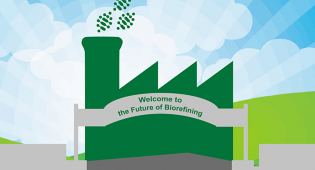It is not just about publications, scientific writing is our future
02.10.2023We must carve out time for scientific writing and publishing to advance our research credentials, contribute to our staff’s professional development, and prioritise quality publications over quantity.
Last year, Xamk launched the scientific writing and publishing career path, which gives writers, researchers, lecturers, and other staff up to 160 hours a year to concentrate on scientific writing and activities to develop their skills.
There have been over 20 people on the career path so far, which includes mentoring, feedback on drafts, language editing and proofreading. The career path aims to give constructive and positive guidance on all things relating to publishing, from finding a suitable journal to publish in, to recovering from devastating comments from Reviewer #2 (see Wilcox, 2019).
Scientific writing takes time
Regardless of career stage, scientific writing is a skill that can constantly be improved. You can aim higher, publish in better journals, and refine your writing and critical thinking skills.
However, scientific writing takes time. Publishing one peer-reviewed article can take over a year (Weaver, 2022). That is time and focus away from publishing other professional articles and study material and making the results of your RDI work visible to others.
Furthermore, the current performance-based funding model for Universities of Applied Sciences in Finland, of which 2 % is dependent on publications, measures only the volume and openness of publications, not the type (OKM). Thus, it would seem that it is in our self-interest to publish as many shorter pieces of work as quickly as possible rather than fewer, longer, slower scientific articles.
So why should we prioritise scientific writing and publishing in universities of applied sciences when the performance-based funding model rewards only the volume of publications and their openness rather than the quality and format of publications?
The answer is seemingly threefold: scientific writing contributes to our staff’s professional development, scientific publishing improves our credibility and visibility as a research institution, and slower, well-thought-out publications can reverse the current race to the bottom with volume prioritised over quality.
Publishing reflects on authors and institutions
Borrowing from the lessons learned from traditional universities, scientific publishing contributes to a writer’s professional development by constructing a research narrative through different publications (Wilkins et al., 2021). Publishing in more prestigious peer reviewed journals brings scientific and professional merits to the authors. This can make gaining research partners and sought-after funding easier, as publications reflect on the author and the institution’s credibility as a research partner.
However, walking the same path as universities cannot be our goal as a university of applied science (see Weaver et al. 2021). Although different, their performance-based funding for publications, dependent on a journal’s prestige and publication volume, is just as problematic as that of a UAS (OKM). So again, the question returns: why?
Although not without problems, scientific writing and publishing are essential skills to learn, which can directly impact a writer’s professional development in many ways beyond the career-oriented focus of universities.
Participating in the scientific community
Scientific writing is intrinsically connected to argumentation and presentation skills (Krest, 1999; Wade, 1995). The ability to justify your research’s relevance and present the results clearly is an asset that will serve the writer well in other areas of their work.
If this work is done in English, it improves their language skills and contributes to the international scientific community. If the work is done in Finnish, it advances the use of language, which is too often hindered by English, the lingua franca of science.
Further, the peer review process in scientific publishing fosters the development of critical thinking and writing skills (Peters et al., 2021). The peer review process introduces expert commentary and feedback on an author’s text. The comments challenge and often provoke authors to think critically about what they are researching, for what purposes, and how the work is presented.
This will serve our lecturers well in the classroom when working with students, especially with the supervision of master’s theses. Our RDI experts will benefit when they present their work, write project applications or other publications, and find international partners.
Slow publishing yields long-term results
Scientific articles take time to write and publish, which means that the work produced is often the result of slow thinking and mature thoughts. While allocating a considerable amount of time and resources to concentrate on scientific writing might, at first glance, seem detrimental to our performance-based publication funding, it will yield better results in the future.
One does not just publish a single scientific article and move on.
A scientific article can be the basis for many different publications and forms of societal outreach. Universities have discussed the need to popularise scientific research for years by participating in conversations in the media or on social media, producing cutting-edge learning material, blog posts, and other work accessible to the general public. Universities of Applied Sciences do these well, so why shouldn’t they be grounded in scientific writing?
Building a new research and publishing culture in Universities of Applied Sciences takes time and resources, and the scientific writing and career path is one critical step in this journey.
References
Krest, M. (1999). Teaching scientific writing: a model for integrating research, writing & critical thinking. The American Biology Teacher, (3), pp. 223–227.
Neuvonen-Rauhala, M. L., Weaver, C. (2022). Concluding remarks. In Xamk Beyond 2022. Impacts (pp. 107–113). Kaakkois-Suomen ammattikorkeakoulu.
OKM, Ministry of Education and Culture. Steering, financing and agreements of higher education institutions, science agencies and research institutes. https://okm.fi/en/steering-financing-and-agreements [accessed on 26.09.2023]
Peters, M. A., Jandrić, P., Irwin, R., Locke, K., Devine, N., Heraud, R., … & Benade, L. (2021). Towards a philosophy of academic publishing. In The Methodology and Philosophy of Collective Writing (pp. 3–37). Routledge.
Wade, C. (1995). Using writing to develop and assess critical thinking. Teaching of Psychology, (1), pp. 24–28.
Weaver, C., Suojärvi, E-M. & Laitala, H. 2021. Publish and Prosper: Supporting a Writer’s Professional Development. XAMK READ, Kaakkois-Suomen ammattikorkeakoulu. https://read.xamk.fi/2021/muu-kehittaminen/publish-and-prosper-supporting-a-writers-professional-development/ [accessed on 26.09.2023]
Wilcox, C. (2019). Rude paper reviews are pervasive and sometimes harmful, study finds. Science https://www.science.org/content/article/rude-paper-reviews-are-pervasive-and-sometimes-harmful-study-finds [accessed on 26.09.2023]
Wilkins, S., Hazzam, J., & Lean, J. (2021). Doctoral publishing as professional development for an academic career in higher education. The International Journal of Management Education, (1), p. 10.


































